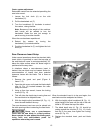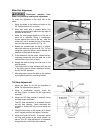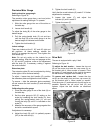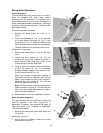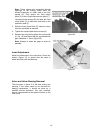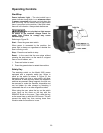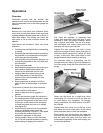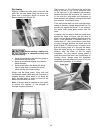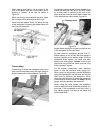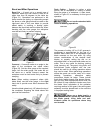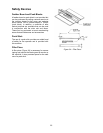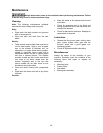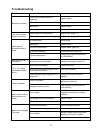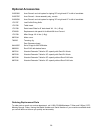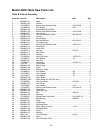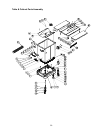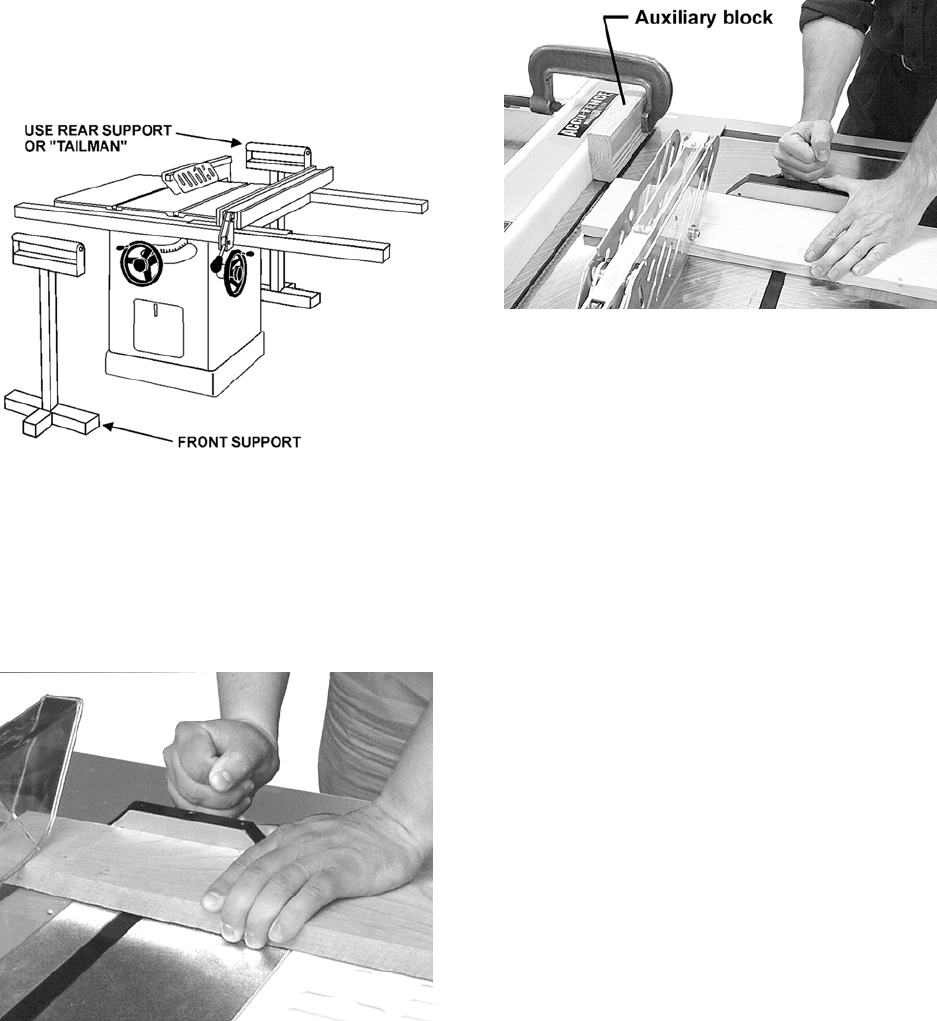
23
When ripping long boards, use a support at the
front of the table, such as a roller stand, and a
support or "tailman" at the rear as shown in
Figure 28.
Never use the rip fence beyond the point where
the carriage is flush with the end of the rails.
Have the blade extend about 1/8" above the top
of the workpiece. Exposing the blade above this
point can be hazardous.
Figure 28
Crosscutting
Crosscutting is where the workpiece is fed cross
grain into the saw blade using the miter gauge to
support and position the workpiece (Figure 29).
Figure 29
Crosscutting should never be done freehand nor
should the fence be used as an end stop unless
an auxiliary block is clamped to the front of the
blade area such that the cutoff piece comes free
of the block before cutting starts (Figure 30).
Figure 30
Length stops should not be used on the free end
of the workpiece in the cutoff area.
Do not crosscut workpieces shorter than 6".
Before starting a cut, be sure the miter gauge is
securely clamped at the desired angle. Hold the
workpiece firmly against the table and back
against the miter gauge. Always use the saw
guard and riving knife and make sure the riving
knife is properly aligned.
For 90 degree crosscutting, most operators
prefer to use the left-hand miter gauge slot.
When using it in this position, hold the workpiece
against the gauge with the left hand and use the
right hand to advance the workpiece. When
using the right hand slot for miter and compound
crosscutting so that the blade tilts away from the
gauge, the hand positions are reversed.
When using the miter gauge, the workpiece
must be held firmly and advanced smoothly at a
slow rate. If the workpiece is not held firmly, it
can vibrate causing it to bind on the blade and
dull the saw teeth.



